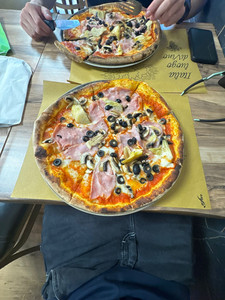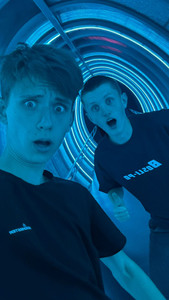
Here’s Dan Miles Thoughts on the Italian FAI World Cup Drone Race
When the dust settles and the props stop spinning, what stays with a pilot isn’t just the adrenaline or the results—it’s the lessons learned, the community forged, and the insight into the next level of performance. Dan Miles, commonly known as “Danbuster”, one of the UK’s rising stars in drone racing, recently competed at the FAI World Cup Drone Race in Italy, and shared his experiences in a lively and detailed interview with the team at BTW Club.
Racing for the World Stage
For Dan, Italy wasn’t just another race—it was part of a broader mission. “This was one of the FAI World Cups,” Dan explains. “It’s an international drone racing season with races all across the world—Europe, Asia, the Middle East.” This was Dan’s second FAI event of the year, following a January outing at the FAI Riyadh World Cup where he achieved 28th in an incredibly challenging environment.

His aim is to earn a wildcard into the 2026 FAI World Championships. “At the moment I’m looking at trying to get a wildcard… I believe it’s the top 16 [from the World Cup series],” he says. Dan is being very calculated with his plan for progression: using each international event to benchmark his skills against the world’s fastest pilots so he knows where to progress, “it's more about improving my own piloting skills, trying to see how I compare to other pilots… seeing where they're getting faster than me, trying to see where I am on the global ranking ready for next season”.
The Surprise of Scale
Coming from the UK race scene, Dan found the scale of the Italian course both impressive and challenging. “There was a huge, like 200-meter straight down the track… It’s a huge thing,” he says. While Dan had been focusing on technical precision training at his local Ware FPV track, the Italian track demanded sustained speed through large features—a whole new kind of skill. “You need to get a bit more comfortable at carrying momentum between different elements of the track.”
Images courtesy of Alex Foxur & the Speedy Pizza Drones team
The gates themselves posed another surprise. “They had huge inflatable ones… corkscrews on huge gates can be quite challenging,” Dan explains. Used to standard championship-size gates, adapting to these larger-than-life obstacles required him to “override muscle memory.”
There was also a huge box pillar gate made from plywood. This was something completely new to Dan and the lads and tested pilots from all countries. “the center bit was a huge two-story dive gate that was [made of] solid wood”. Dan managed to negotiate this obstacle but one guy was not so lucky. “he left a dent in the wood from his quad… I think he said he broke nine parts of his quads. It was ridiculous, so we tried not to hit that”
Check Out The Live Stream Here
https://www.youtube.com/live/90ptIOZxbmI?si=t37kP65i3tepPa8A&t=11304
Pushing to the Limits
Unpredictable weather didn’t stop the action. “Rain doesn’t really bother [us] at these kinds of races… unless something gets stuck on your camera lens… fly faster. Get the air to push it off” Dan says laughing. For the most part, racing continued even in light to medium rain. His biggest concern wasn’t the wet—it was power management on the long, demanding track.
“I think they got me doing 180 kilometers an hour down that straight, then you go straight into a sharp turn and you can feel the battery sag” Dan recalls. He opted for a lighter battery setup, sacrificing longevity of flight for responsiveness. He wanted the drone to fly just like he was used to back home. “It’s much more [about] your efficiency—smooth lines or sharp lines, how much accelerating and decelerating,” he explained, that affects your battery.
Speaking of his final qualifying run against long-time rival, training partner and good friend, Joshy. “We battle it out,” Dan laughed. “And if he says we don’t battle out, he’s lying to you.”
Images courtesy of Alex Foxur & the Speedy Pizza Drones team
The pair had been trading blows all weekend, and in the last qualifying round, it came down to a final sprint to edge out each other’s times. “I got quite a killer run in” earlier that day he said excitedly, then Joshy, who was knackered from his 18 hour drive to Italy, “was pushing and pushing, and then [in] his last round he got me.”
Dan knew he had just one more shot to claw his way back. “It was all going well... I had no idea if I was going to get him or not,” he said. But by the third-to-last gate, disaster loomed. “I’m at like 2.8 volts [per cell] or so, full-throttling it and barely moving,” Dan said. For any racing pilot, dropping that low on voltage means serious battery sag—enough to make the quad feel sluggish, and unresponsive. Every second felt like it might be the last. Yet somehow, he pulled it off. “I got him by half a second,” Dan grinned. “There was nothing to lose,” Dan shrugged. “I just gave it my absolute all”.
It wasn’t just close—it was borderline dangerous. “I brought my battery into the pit zone, and an American guy told me, ‘You gotta get this out of there. That’s about to blow up.’” Dan admitted, “It was very hot. Incredibly puffed. That thing was done for.” It was just one of the 6 batteries sacrificed to the gods of drone racing that weekend in the pursuit of the fastest times.
Double Elims and High Stakes
The format for FAI events differs from the UK’s triple-final system. “Personally, I prefer the double eliminations,” says Dan. After seeding through qualifications, pilots face off in high-pressure knockout rounds. “You’ve got one life and then after that, you’re out.��” He explained that pilots are grouped into heats with evenly spaced pilots from the qualifying rounds. This means if you do really well in qualifying, you can be up against much slower people and have an easier first elimination race, helping you progress much further.

1 | Hashimoto Yuki |
2 | Rousseau Killian |
3 | Bailleau Guillaume |
Check out the full results here
Dan’s qualifying performance placed him 13th, but the double-elim rounds didn’t go as planned. “I came 25th overall… Not my best double-elims round,” he admits. In one heat, he was clipped from behind by a faster pilot, knocking his quad out mid-race. “That was a difficult one… I was up against Timmy from Sweden—faster than me—and I just got whacked out of the sky.”
Team Spirit and Pizza
Beyond the competition, the camaraderie was strong. Dan, along with fellow pilot Ed shared a room and found time for a bit of hotel mischief. “We brought Cine Whoops with us and were flying around the hotel”. It sounded like they had a great time fooling around flying.
Dan shared how training with your mates really helps you push your limits, “..if there is anyone who’s going to try and beat me — it’s Joshy. And if there’s anyone I’m trying to beat, it’s Joshy,” Dan admits. Their rivalry is real, but rooted in mutual respect. “We can really compare our footage and give each other advice… getting that input really helps.”
The evenings were filled with laughs, pizza, and international friendships. “There’s a really strong sense of community amongst all the pilots,” Dan says. “Even though we only see each other a few times a year, everyone’s hanging out, sharing gear, going out for meals.” Having been to the IWL (Italian Whoop League) a couple years back, I know just how much fun and how much amazing pizza is shared after the racing is finished!
Looking Ahead: Europe and Nationals
With Italy behind him, Dan’s focus shifts to the MultiGP Global Qualifier in Oxford followed closely by the UK National Championships. He’s also preparing for the MultiGP European Championships in Germany this September, “I’m hoping for a top-five finish [in Europe],” he says, although he adds, “Killian will be there… he’ll be demolishing me.”
There’s no shortage of ambition, but Dan’s also grounded in the practicalities. “Focusing on that long game at the moment and being best prepared for next season,” he notes.
Why Tiny Whoops Matter
As the summer outdoor season progresses, Dan is already planning his return to the Tiny Whoop winter series, including the next BIRD (Birmingham International Race Days) event in early 2026.
“Tiny Whoops are an excellent training tool,” he says firmly. “They fly differently to 5-inch quads, and that’s a good thing.” With limited opportunities for outdoor training in the UK winter, Dan views indoor whoop racing not as a compromise but as a core part of his off-season regimen.
“There’s no coincidence that the world’s best drone racing pilots are often also world-class helicopter pilots,” he explains. “All these skills translate. Doing something different like Whoops forces your brain to adapt. When you go back to five-inch, you’ll find you’ve become a better pilot across the board.”
He’s also a fan of pushing the limits with micro-drones. “With Whoops, you can crash every lap… and now it feels so much more comfortable because you’ve just got used to pushing full throttle way beyond the actual speed.” Like many whoop racers, this ability to crash without major consequences lets them really push for the fastest speeds. A crash may lose you the race, but in training it lets you go full throttle without worrying about damaging anything, anyone or your bank balance.
Final Words of Advice
For those just starting out, Dan offers some grounded advice: “Get a simulator. That’s the first thing you should do as a beginner… and get a whoop.” He stresses the importance of building good habits early. “Focus on making as few corrections as possible. Smooth, consistent flying beats flashy DVR any day.”
As Dan prepares to re-enter the Whoop scene this winter and sharpen his edge for the 2026 World Cup season, one thing’s clear:
He’s got both the talent and mindset to go far—very far.


































